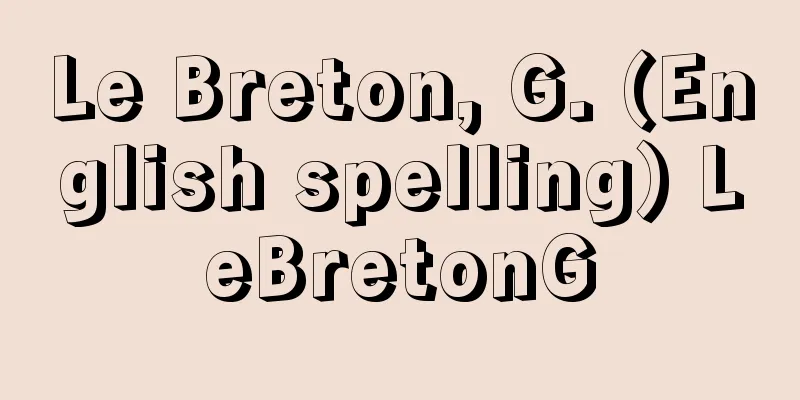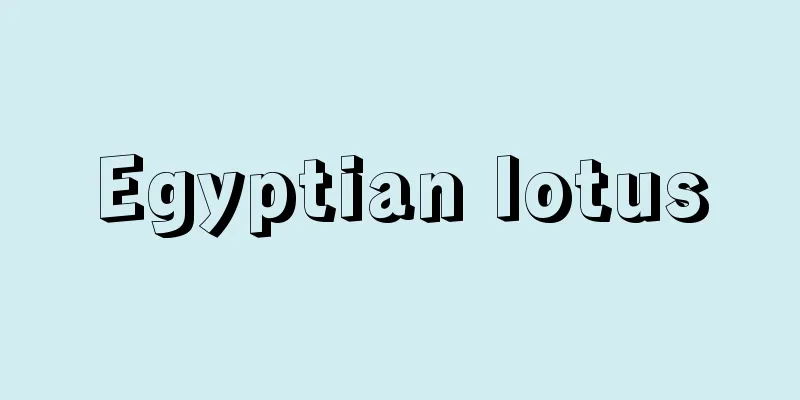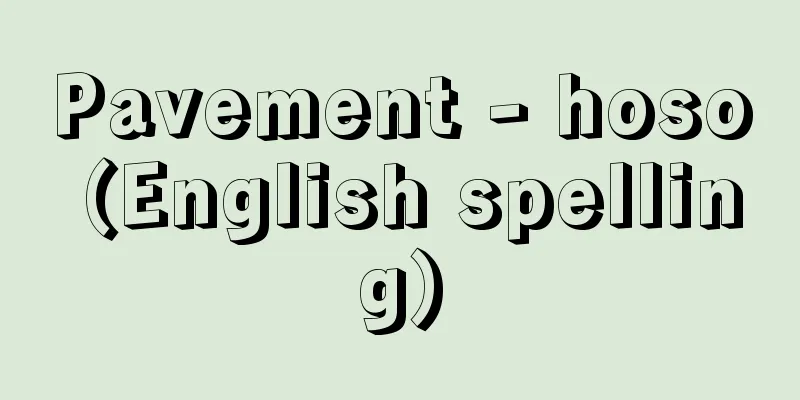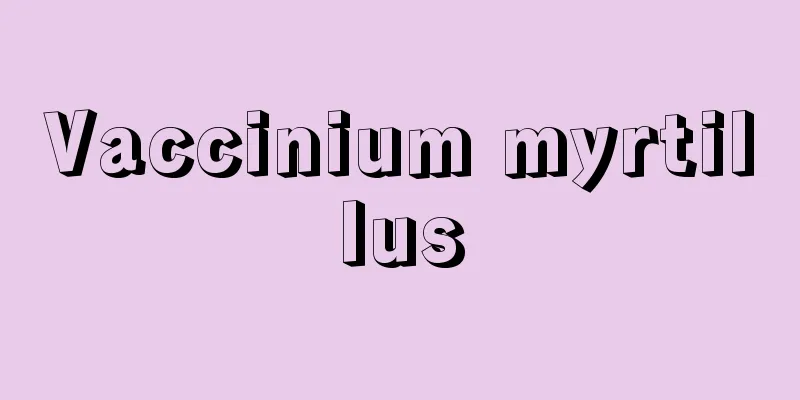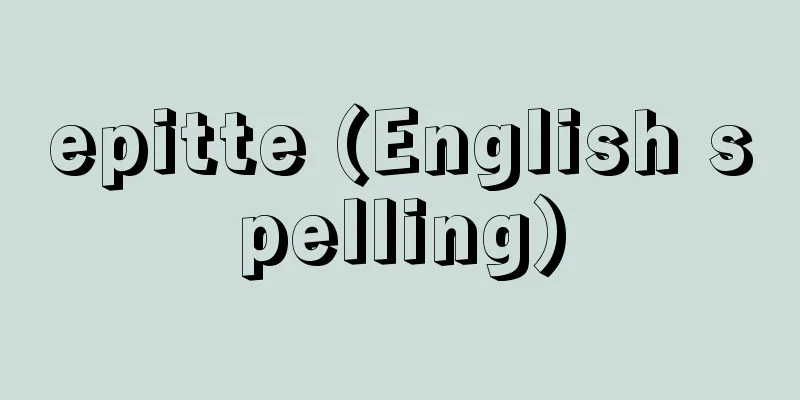Thinking - thinking (English), pense´e (French), Denken (German)
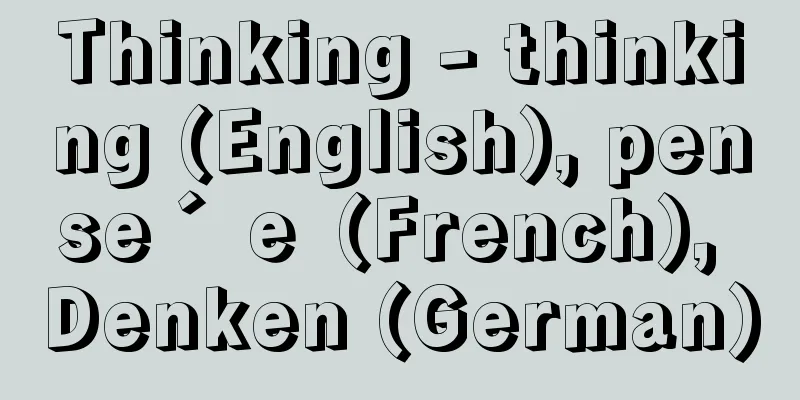
|
Thinking is a high-level mental activity that models the world and manipulates that model in order to effectively reach the goal of the thinking subject. In terms of being a mental activity to reach a goal, it is almost synonymous with problem solving. However, when we talk about research into problem solving, we usually mean cognitive science research that has been heavily influenced by artificial intelligence research, which is mainly about creating computer programs that solve problems in the same way as humans do. In other words, it is an approach that describes problem solving as a problem space with an initial state, a goal state, and operators that connect the two. All of these operations are expressed as metaphors of information processing. On the other hand, when we talk about research into thinking, it includes not only cognitive science, but also the cognitive development research of Piaget, J., which was not initially influenced much by cognitive science, and the thinking research of the Gestalt school that preceded the information processing approach. However, researchers who reorganized Piaget's theories and ideas with an approach that considers thinking as an information processing process are called neo-Piagetians, and currently, these researches also use the information processing approach called cognitive psychology. Thinking can be classified from various perspectives, but as an example, Figure 1 shows the classification by Johnson-Laird, PN (1988). According to him, daydreaming is thought without a goal and is distinguished from problem solving. Thinking with a goal is problem solving, and among them, deterministic thinking is called computation. Being deterministic means that when a certain solution procedure is adopted, the next step has already been determined in order to arrive at the correct answer. Furthermore, among thinking other than computation, thinking without a precise goal is called creation, and thinking with a goal is called reasoning. In particular, creativity corresponds to the former in the classification of divergent thinking and convergent thinking, but this point will be discussed later. [Inductive reasoning and deductive reasoning] In thinking research, especially in problem solving research, the biggest problem is how humans search a huge problem space using their limited cognitive capacity. Many suggestions have been given to this problem from reasoning research. Reasoning is a mental activity that derives a conclusion from a premise, and can be classified into inductive reasoning and deductive reasoning, but in research it is further subdivided according to the type of problem. Reasoning can be divided into two categories: inductive reasoning, which increases the amount of information, and deductive reasoning, which does not. Inductive reasoning is the process of deriving a general rule by observing several cases, such as "watermelon a is red, watermelon b is red, watermelon c is red, therefore watermelons are red." On the other hand, in deductive reasoning, the conclusion must be derived from the premise with logical necessity, such as "all men are mortal, Socrates is a man, therefore Socrates is mortal." In general, the more ambiguous interpretations of a proposition can be eliminated, the more information the proposition contains. For example, "It is pouring" contains more information than "It is raining," because it eliminates the possibility of a small amount of rain. In other words, in the above example of inductive reasoning, the premise only states the colors of watermelons a, b, and c, but it leads to the conclusion that the other watermelons are also red. This reference to watermelons other than a, b, and c corresponds to an increase in the amount of information. In inductive reasoning research, tasks such as the one mentioned above, in which subjects are asked to conclude that "watermelons are red" by observing several watermelons, are not often used. In the past, when concept formation was considered to be the discovery of common features among several examples (common feature theory), tasks of this type were used. However, when similarity-based theories, such as prototype theory, which posits that bird concepts are formed around the image prototype of the most bird-like bird, became mainstream in concept formation research, typical inductive reasoning tasks were no longer used very often. In general, inductive reasoning, which adds information, is used to expand knowledge from limited observed information. In other words, it is the formation of hypotheses about general laws while observing individual cases. A classic example is the Wason 2-4-6 task. In this task, participants are first given the example of "2-4-6" and must answer what rule this number sequence follows. At that time, participants are given appropriate examples and the experimenter gives feedback on whether the example fits the rule. For example, suppose the correct answer was "a sequence of three numbers that increases as you go to the right." However, if the hypothesis is "a sequence of even numbers that increases by two," participants will try to verify this by giving examples such as "1-3-5" to verify that their hypothesis is correct. In this case, it is difficult to find the correct rule, and in order to find it, it is necessary to give examples that disprove the provisional hypothesis, such as "4-3-2." This study provides evidence that humans tend to look for examples that confirm hypotheses rather than reject them. In inductive reasoning, there are an infinite number of noteworthy features for forming hypotheses. For example, in the previous example of "2-4-6," we can hypothesize the rule "figures containing curves - figures containing only straight lines - figures containing curves." According to this hypothesis, "○-\-◎" would also be a correct example. If the task was tricky, this hypothesis might be the correct answer. However, such hypotheses are not usually formed in the first place. This is because there is a recognition that it is important for numbers to represent "numbers," and a constraint comes into play that, based on this recognition, forms hypotheses related to "numbers" rather than "shapes." A constraint is a concept that indicates a state in which the hypotheses to be considered and the information to be explored are limited in advance. On the other hand, deductive reasoning can be broadly categorized into conditional reasoning and categorical reasoning. These issues were used, especially in the 1970s and 1980s, to examine the extent to which logic, which is considered the norm for human thought, is at odds with one another. A conditional inference includes a condition clause in the premise. For example, a typical example would be the affirmative statement modus ponens, which derives "q is true" from "if p, then q, p is true." In general, the negative statement modus tollens, which derives "p is false" from "if p, then q, q is false," is more difficult than an affirmative statement. In the case of conditional inference including a conditional statement, propositional logic is the norm. In propositional logic, as shown in the table, this conditional statement is false only if p is true and q is false, and is true otherwise. Therefore, it is incorrect to derive "q is false" from "if p, then q, p is false," or to derive "p is true" from "if p, then q, q is true" (the correct answer is "Nothing can be derived"). The Wason selection task is a task that modifies conditional reasoning and asks participants to follow a procedure for testing the truth of a conditional statement. A typical example is shown in Figure 2. A conditional statement is false only when its antecedent is true and its consequent is false, so the correct answers are "B" and "5," but many people choose "2" instead of "5." This task has been used in many studies because it has a simple logical structure but has many incorrect answers. However, for example, if the conditional statement is "If you drink alcohol, you must be over 20 years old," and participants are asked to check the drink and age using cards with "beer," "milk," "15 years old," and "20 years old," the correct answer rate for "beer" and "15 years old" increases significantly. Many theories have been proposed regarding this content effect. Categorical reasoning does not include conditional clauses in the premises, and uses quantifiers such as "all" or "some" and negated premises. In particular, a syllogism is one that derives a conclusion from two premises. These range from relatively simple ones, such as "All A's are B, all B's are C" to "All A's are C," to more difficult ones, such as "No A's are B, all B's are C" to "Some C's are not A." [Analogy and probabilistic inference] Analogy and probabilistic inference are considered to be close to inductive inference. Analogy is the inference that when two things have some things in common and one of the things has certain properties or relationships, the other thing will likely have similar properties or relationships. Analogy is sometimes positioned as a form of inductive inference research, but strictly speaking, it is different from deduction and induction, and involves applying inference from one specific case to another specific case based on similarities. Analogy has a more practical meaning, such as inferring about a novel phenomenon based on similarities with known phenomena, or expanding knowledge from known phenomena to novel phenomena, rather than a logical meaning. Here, the known phenomenon is called the base, and the novel phenomenon is called the target. When humans try to understand a novel target, they consider which of their known phenomena the target is most similar to and decide which phenomenon will be the base. Next, correspondence is made between characteristics and relationships other than the common elements used in the similarity judgment. For example, a typical example of analogy is to understand targets such as voltage and current by using water pressure and water flow as a base. Probabilistic reasoning is often classified as inductive reasoning because deductive reasoning is necessary and inductive reasoning is probable. Indeed, inductive reasoning may be taking place when, for example, one is asked to estimate the "probability of being involved in a traffic accident in the next 30 years." However, typical tasks used in reasoning research are rather ones in which a normative solution can be derived from existing probabilities using probability theory, and many of these tasks show how human probabilistic reasoning does not match normative probability theory. The Linda problem, devised by Tversky, A. and Kahneman, D. (1983), asks participants to estimate which is more likely: that an intelligent woman named Linda, who was involved in the anti-discrimination and anti-nuclear movements during her student days, will be a bank clerk or a bank clerk and feminist activist 10 years after graduation. Most people choose the latter. However, the latter is a conjunction event of "P (bank clerk) and Q (feminist activist)," so probabilistically it should be lower than P (bank clerk). Nevertheless, this erroneous judgment that the probability of "bank clerk and feminist activist" is high is called the conjunction fallacy. Tversky and Kahneman explained this as being due to representativeness heuristics. In other words, people form an image of Linda that represents her from the text about her, and judge the option that best matches that image to be more likely. This representativeness heuristic also explains the phenomenon known as the gambler's fallacy, in which people judge the probability of a coin landing "heads, heads, tails" to be higher than the probability of it landing "heads, heads, tails." Generally, when a coin is tossed, the occurrence of heads or tails is random, but the order of occurrence of "heads, heads, tails" is more representative of randomness than "heads, heads, heads," and is therefore more likely to be judged to have a higher probability. The next infection problem was also devised by Tversky and Kahneman. "In a test to check for infection with a disease that 1/1000 people are infected with, suppose the probability of a positive result even if the person is not infected is 5%. If a person is found to be positive, what is the probability that the person is really infected with the disease, assuming that the person does not know any symptoms of the disease?" This is a problem in which the prior probability of an arbitrary person being infected (in this case, 0.1%) is given, and the information of "positive" including error is obtained, and how should the prior probability be corrected to derive the posterior probability? Since not only the 1/1000 infected people but also uninfected people have a 5% probability of testing positive, it is necessary to find the ratio of infected people to all positive testers. The correct answer is about 2%. However, the correct answer rate in previous studies has been very low, and some people have answered 95%. This incorrect answer phenomenon occurs because the information that the prior probability of infection is 1/1000 is ignored and only the test error of 5% is considered, and is called the bias of ignoring the prior probability or ignoring the base-rate. [Theories of inference and thinking] From the above-mentioned research into inference, important theories about not only thinking but also human cognition have been proposed. The fundamental question in the psychology of thinking is, "How do humans explore complex problem spaces with limited cognitive capacity?" In conjunction with this question, inference research has debated the question of whether humans are rational thinkers. In reasoning research, issues of the level of abstraction and domain-specificity of knowledge used in thinking are addressed. The approach that has most emphasized logic is the mental logic theory proposed by Rips, LJ and others. This theory claims that abstract and "natural" logical propositions are used in human reasoning, and has been primarily verified using conditional reasoning tasks. Natural propositions are propositions that are taken for granted, such as the law of identity, "If P, then P," or axioms, such as "The negation of the negation of P is P," and are thought to be stored in memory in the form of schemas. Generally, difficult reasoning tasks require the use of multiple such schemas, which is said to strain processing capacity and make people more likely to give incorrect answers. One of the problems with the psychological logic theory is that the criteria for what logical schema is considered "natural" are unclear. The mental model theory proposed by Johnson and Laird explains this difference in difficulty. A mental model is constructed as a concrete representation that is perceptually almost identical to the actual entity, and is a working model in the mind for understanding the premise of an inference or deriving a conclusion, and is constructed through semantic procedures. The earliest theory explained the difficulty of categorical inference, but it has since been applied to conditional inference and the Wason selection task. The mental model theory also argues that difficult tasks require the construction of many mental models, and that difficulties arise due to limitations in cognitive capacity, just like the psychological logic theory. The issue of domain-specificity of knowledge has also been discussed in the field of cognitive development research, and was also raised in relation to the content effect of the Wason multiple choice task mentioned above. Initially, the reason why the conditional statement "If you drink alcohol, you must be over 20 years old" promotes correct answers was interpreted as being domain-specific because knowledge about the domain of "drinking and age" is easily accessible. However, pragmatic reasoning schema theory by Cheng, PW and Holyoak, KJ (1985) assumes schemas at a medium level of abstraction, such as "permission," "obligation," and "prohibition," rather than schemas at a high level of abstraction like the psychological logic theory. These schemas are not domain-specific, such as "if you perform an action, the premise must be satisfied," but they are not abstract enough to determine truth or falsity with a logical formula. On the other hand, in evolutionary psychology, human cognitive mechanisms are considered to be composed of a bundle of domain-specific modules. A module is an automatic, encapsulated process that responds to specific inputs (domain-specific), and is said to have formed during the process of evolution. One of these modules is the social contract module, which states that if a benefit is obtained, a price is paid. This module is thought to be sensitive to individuals that do not abide by the social contract, adaptively enabling reciprocal altruistic behavior. Cosmides, L. (1989) interpreted the content effect in the Wason choice task as the result of the evocation of the social contract module, which states that if a benefit (alcohol) is obtained, a price (adult obligation) is paid. In addition, in the infection problem introduced in probabilistic reasoning, a frequency effect is observed in which a higher rate of correct answers is obtained when information is given in the frequency format of "1 in 1000" or "50 in 1000" instead of 1/1000 or 5%. Evolutionary psychology interprets this effect as occurring because the cognitive mechanisms of humans, which evolved in wild hunter-gatherer societies, are more suited to frequency representation than the probability representation format devised in arithmetic and mathematics in civilized societies. Evolutionary psychology considers the human mind to be composed of many modules. However, the dual process theory, which was originally proposed to explain biases in reasoning, acknowledges that the mind is composed of a bundle of modules, but in addition, it assumes a system that is explicit, domain-universal, and capable of analytically understanding the correct answer. It is agreed that biases arise from latent processes with modularity. However, the point of conflict is that it assumes a domain-universal system, which evolutionary psychology denies. [Creative thinking] Guilford, JP's classification of divergent thinking and convergent thinking does not necessarily completely match the classification of "whether a precise goal exists" mentioned above. However, generally speaking, convergent thinking is thinking that moves toward a set goal or solution, whereas divergent thinking is thinking that considers various possibilities from given information to generate a new answer. Creativity may be essentially divergent, but thinking that people evaluate as creative includes convergent thinking to reach some goal along the way. The process of creative thinking is classically classified by Wallas G. into the preparation, incubation, revelation, and verification stages. In the preparation stage, the problem to be solved is examined and explored from all angles, and necessary information is collected. However, there are cases where the solution does not proceed smoothly and an impasse is reached. This impasse is called an impasse. In the incubation stage, the person temporarily steps away from the problem and appears to be engaged in a different activity, but this helps to escape the impasse. The result appears in the revelation stage, and suddenly, without warning, an original solution is found. In the verification stage, the idea is verified and embodied by applying it to the problem to see whether it is actually effective or not. Of these processes, divergent thinking is thought to take place from the incubation stage to the revelation stage. On the other hand, the verification stage is convergent thinking toward a clear goal, which is necessary if creative inspiration is to actually manifest itself as an outcome. If we describe this process using a modern information processing approach, what takes place in the incubation stage is, first of all, liberation from inappropriate constraints that have led to impassivity. When trying to solve a problem or engage in creative activity, humans are inevitably trapped by preconceived ideas, habits, and common sense. As a result, these place constraints on the direction of the solution. If these are appropriate, there is no problem, but if they are inappropriate, impassivity will occur. In this case, the more you concentrate on the problem, the stronger the inappropriate constraints will become, and it will be impossible to escape from the impassivity. In the incubation stage, it is thought that by stopping this concentration, inappropriate constraints are liberated. [Thinking and Cultural Differences] It was pointed out early on that there are cultural differences in thinking. For example, Cole, M. et al. (1971) showed that the reasoning of people living non-modern lives in Africa is not formal. This is also evident from the fact that it is evidence of the Sapir-Whorf hypothesis, which claims that thinking is strongly restricted by the language used. It was only in the 21st century that cross-cultural research into thinking has increased significantly, with a major influence being the comprehensive description by Nisbett, RE (2003) that Westerners have analytic cognition and Easterners have holistic cognition. Nisbett's cultural psychology approach incorporates an information processing approach. However, even though he places importance on information processing, he disagrees with the idea that thinking only takes place in the head, as Piaget did, and, influenced by Vygotsky, LS, who argues that thinking is shared throughout culture, emphasizes the position that cognition and thinking are deeply embedded in culture and cannot be separated. → Decision making → Concepts → Information processing → Inventions and discoveries → Problem solving [Yama Yuji] "> Figure 2 Example of a Wason selection task (Johnson-Laird, translated by Hiroyuki Kaiho et al., Simulation of the Mind: Johnson-Laird's Introduction to Cognitive Science, Shinyosha, 1989) Figure 1 Johnson Laird's Thinking... "> Table Truth of the conditional statement "If p then q"... Latest Sources Psychology Encyclopedia Latest Psychology Encyclopedia About Information |
|
思考とは,思考する主体の目標に効果的に到達するために,世界をモデル化してそのモデルを操作するような高次の精神活動である。目標に到達するための精神活動という点では,問題解決problem solvingとほとんど同義である。ただし,問題解決の研究という場合は,習慣的に,主として人間と同じような問題解決を行なうコンピュータ・プログラムを作成するという人工知能研究の影響を大きく受けた認知科学的な研究を指すことが多い。すなわち問題解決を,初期状態と目標状態および両者を結ぶオペレータによる問題空間として記述していくアプローチである。これらのオペレーションは,すべて情報処理の比喩で表現されている。それに対して,思考研究という場合は,認知科学のみならず,当初はあまり認知科学の影響を受けなかったピアジェPiaget,J.の認知発達研究や,情報処理アプローチ以前のゲシュタルト学派の思考研究が含まれる。ただし,ピアジェの理論や考え方を,思考を情報処理過程とみなすアプローチで再編成した研究者たちは,新ピアジェ派neo-Piagetianとよばれ,現在では,これらの研究でも,認知心理学とよばれる情報処理のアプローチが用いられている。 思考は,さまざまな視点からの分類が可能だが,一例として,図1に,ジョンソン・レアードJohnson-Laird,P.N.(1988)による分類を示した。彼によれば,白昼夢daydreamingは目標がない思考として,問題解決とは区別される。目標が存在する思考は問題解決であり,そのうち決定論的であるものを計算computationとよぶ。決定論的であるとは,ある解決手続きを採用したとき,正解にたどり着くために,次のステップが決定されていることを意味する。さらに,計算以外の思考のうち,正確な目標が存在しないものが創造creation,存在するものが推論reasoningである。とくに,創造は,拡散的思考・収束的思考という分類において前者に相当するが,この点については後述する。 【帰納的推論と演繹的推論】 思考研究,とくに問題解決研究においては,人間が限られた認知容量を用いてどのようにして膨大な問題空間を探索するのかという点が最も大きな問題である。この問題に対して,推論研究から多くの示唆が得られている。推論とは,ある前提から帰結を導く精神の活動で,帰納的推論と演繹的推論とに分類できるが,研究上はその課題形式ごとにさらに細分化されている。 推論は情報量を増大させるか否かで二分され,させるものが帰納的推論inductive reasoning,させないものが演繹的推論deductive reasoningである。帰納的推論とは,たとえば,「スイカaは赤い,スイカbは赤い,スイカcは赤い,ゆえにスイカは赤い」というように,いくつかの事例を観察して一般法則を導くものである。一方,演繹的推論では,「人はすべて死ぬ,ソクラテスは人である,ゆえにソクラテスは死ぬ」のように,前提から帰結が論理的必然をもって導かれなければならない。なお,一般に,ある命題から,解釈の多義性を排除できるほどその命題の情報量は多いとされる。たとえば,「雨が降っている」よりは「土砂降りである」の方が,雨量が少ない可能性を排除できるので,情報量が多くなる。すなわち,上記の帰納的推論の例では,前提においてa,b,cのスイカの色が述べられているのみであるが,それ以外のスイカも赤いという帰結を導いている。この,a,b,c以外のスイカへの言及が情報量の増大に相当する。 なお帰納的推論の研究においては,すでに挙げた例のような,いくつかのスイカを観察して「スイカは赤い」という帰結を導かせるような課題は多くは用いられていない。かつての,概念形成がいくつかの事例の共通特徴を見いだすこと(共通特徴説)とみなされてきた時代には,このような形式の課題も用いられていた。しかし,たとえば,鳥概念は,最も鳥らしい鳥のイメージプロトタイプを中心に形成されるとするプロトタイプ理論prototype theoryなど,類似性を基盤とする理論が概念形成研究での主流になると,典型的な帰納的推論の課題はあまり用いられなくなった。 一般に,情報量が追加される帰納的推論は,観察された限られた情報から知識を拡張するために行なわれる。換言すれば,個別事例を観察しながら行なわれる一般法則についての仮説形成でもある。古典的な例として,ウェイソン2-4-6課題がある。この課題では,実験参加者は,最初に「2-4-6」という事例を与えられて,この数字系列がどのような法則で構成されているのかを答えなければならない。その際に,適当な事例を挙げて実験者からその事例が法則に当てはまっているかどうかがフィードバックされる。たとえば「右に行くほど大きくなる3数列」が正解だったとする。ところがこのとき,「2ずつ増加する偶数列」という仮説が立てられると,実験参加者はこの検証のために,「1-3-5」などの事例を挙げて,自らの仮説が正しいことを確かめようとする。こうなると,正解の法則をなかなか発見できず,発見のためには「4-3-2」のように,暫定的な仮説を反証する事例を挙げることが必要である。この研究は,人間には仮説を棄却するよりも確証するような事例を探索する傾向があるという証拠となっている。 帰納的推論では,仮説を形成するのに注目すべき特徴は無限にある。たとえば,先の「2-4-6」の例では,「曲線が含まれる図形-直線のみの図形-曲線が含まれる図形」という法則を仮説としてもつことができる。この仮説に従えば,「○-\-◎」も正しい事例になる。意地悪な課題ならば,この仮説が正解となる場合もありうる。しかし,通常,まずこのような仮説が形成されることはない。それは,数字は「数」を表現することが重要であるという認識があり,この認識に基づいて「形」ではなく「数」に関係する仮説を立てるような制約constraintが働くからである。制約とは,検討すべき仮説や探索すべき情報があらかじめ制限されている状態を示す概念である。 一方,演繹的推論は大別して,条件的推論conditional reasoningと定言的推論categorical reasoningに分類することができる。これらの課題は,とくに1970年代から80年代にかけて,人間の思考の規範とされる論理学がどの程度食い違っているのかを検討するのに用いられてきた。 条件的推論は,前提に条件節を含むもので,たとえば,「もしpならばq,pは真」から「qは真」を導くような肯定式modus ponensが代表例である。一般に,「もしpならばq,qは偽」から「pは偽」を導く否定式modus tollensは,肯定式よりも困難である。条件文を含む条件的推論の場合は,命題論理学が規範となる。命題論理学では,表に示されるように,この条件文は,pが真でqが偽である場合のみ偽とされ,それ以外は真となる。したがって,「もしpならばq,pは偽」から「qは偽」を導いたり,また,「もしpならばq,qは真」から「pは真」を導いたりすれば,誤りとなる(正解は,「何も導くことはできない」である)。 条件的推論を変形して,条件文の真偽を検査する手続きを問うという形式にした課題が,ウェイソン選択課題Wason selection taskで,代表的なものが図2に示される。条件文は,前件が真で後件が偽である事例によってのみ偽とされるので,正解は「B」と「5」だが,多くの人は,5の代わりに2を選択してしまう。この課題は,単純な論理構造であるにもかかわらず,誤答が多いということで,多くの研究に用いられた。ところが,たとえば,条件文を「もしアルコールを飲むならば,20歳以上でなければならない」とし,「ビール」,「ミルク」,「15歳」,「20歳」のカードで飲み物や年齢を調べるという状況では,「ビール」と「15歳」という正答率は大きく上昇する。この内容効果をめぐって,多くの理論が提唱されている。 定言的推論は,前提に条件節を含まないものであり,「すべての」や「ある」などの量化子および否定辞つきの前提が用いられている。とくに,二つの前提からある帰結を導くものは,三段論法syllogismとよばれている。これには,「すべてのAはBである,すべてのBはCである」から「すべてのAはCである」を導くような比較的簡単なものから,「どのAもBではない,すべてのBはCである」から「あるCはAではない」を導く困難なものまである。 【類推と確率的推論】 帰納的推論に近いと考えられているものに,類推analogyと確率的推論probabilistic inferenceがある。類推とは,二つの事物にいくつかの共通点があり,かつ一方の事物がある性質や関係をもつ場合に,もう一方の事物もそれと類似した性質や関係をもつであろうと推論することである。類推は帰納的推論研究として位置づけられることもあるが,厳密には,演繹とも帰納とも異なり,類似点に基づいてある特殊な事例から他の特殊な事例へ推論を及ぼすことである。 類推は,論理学的な意味合いよりも,既知の事象との類似を手がかりに新奇な事象について推理したり,既知の事象から新奇な事象へと知識を拡大したりという実用的な意味合いが強い。ここで,既知の事象をベース,新奇な事象をターゲットという。人間は,新奇なターゲットを理解しようとするとき,ターゲットが自分の既知のどの事象と類似性が高いかを検討し,ベースとなる事象を決定する。次に,類似判断に利用した共通要素以外の特徴や関係について対応づけが行なわれる。たとえば,電圧や電流というターゲットを理解するのに,水圧と水流をベースとして対応づけをすることは典型的な類推の例である。 確率的推論は,演繹的推論が必然的であり,帰納的推論が蓋然的であるという理由で,帰納的推論であると分類されることが多い。たしかに,たとえば,「今後30年の間に交通事故に遭う確率」を推定させるような場合には,帰納的推論が行なわれているかもしれない。しかし,推論研究で用いられた代表的な課題は,むしろ既存の確率から確率論を用いて規範解を導くことができるものであり,その多くは,人間の確率的推論がいかに規範的な確率論と一致していないかを示すものである。 トベルスキーTversky,A.とカーネマンKahneman,D.(1983)が考案したリンダ問題Linda problemとよばれる課題は,学生時代に女性差別撤廃運動や反核運動にかかわってきた聡明なリンダという女性が,卒業後10年経って,「銀行員である」確率と「銀行員でかつフェミニスト運動家である」確率とではどちらが高いか推定させるものである。多くの人びとは後者を選択する。しかし,後者は「P(銀行員)かつQ(フェミニスト運動家)」という連言事象なので,確率論的にはP(銀行員)以下のはずである。にもかかわらず「銀行員でフェミニスト運動家」の確率が高いとするこの誤った判断は,連言誤謬とよばれる。トベルスキーとカーネマンは,代表性ヒューリスティックスrepresentativeness heuristicsによるものとしてこれを説明した。すなわち,人びとは,リンダについての文章から彼女を代表するようなイメージを描き,そのイメージに最もうまく一致する選択肢の確率が高いと判断するわけである。 この代表性ヒューリスティックスは,コインが「表表表表」と出るよりも,「表表表裏」と出る確率の方が高いと判断してしまうギャンブラーの誤謬gambler's fallacyという現象も説明する。一般にコインを振る場合,表裏事象の生起はランダムであるが,「表表表表」よりは「表表表裏」の生起順序の方が,ランダム性を代表しているといえ,それで確率が高いと判断されやすいのである。 次の感染問題もトベルスキーとカーネマンが考案したものである。「1/1000が感染している病気の感染の有無を調べる検査において,感染していないのに陽性となる確率が5%であるとする。もしある人が陽性と判明したとき,その人の病気の兆候などを一切知らないと仮定して,ほんとうにその病気に感染している可能性はどの程度か?」これは,任意のある人が感染している事前確率(この場合,0.1%)が与えられ,誤差を含む「陽性」という情報が得られた結果,どのように事前確率を修正して事後確率を導くべきかという課題である。感染している1/1000だけではなく,感染していない人びとにおいても5%の確率で陽性反応が出るので,陽性反応者全員に対する感染者の比率を求める必要がある。正答は,約2%である。ところが,これまでの研究における正答率はたいへん低く,95%と答えてしまう人もいる。この誤答現象は,感染している事前確率が1/1000という情報が無視されて,5%という検査の誤差だけが考慮されて生じたもので,事前確率無視または基礎比率無視base-rate neglectのバイアスとよばれている。 【推論・思考の理論】 前述のような推論の研究から,思考のみならず人間の認知についての重要な理論が提唱されている。思考心理学の根本的な問題は,「人間は,限られた認知容量で,どのようにして複雑な問題空間を探索するのか」である。この問題に付随して,推論研究では,人間が合理的な思考者なのかどうかという問題が議論されてきた。推論研究では,思考で用いられる知識の抽象度や領域固有性の問題が扱われている。 論理性を最も強調してきた考え方は,リップスRips,L.J.らによる心理論理理論mental logic theoryである。この理論は,人間の推論には抽象的で「自然な」論理命題が用いられていると主張し,主として,条件的推論の課題を用いて検証されてきた。自然な命題とは,たとえば,「PならばP」のような同一律や,「Pの否定の否定はP」のように,わたしたちにとって当然である公理のような命題であり,スキーマの形式で記憶に保持されていると考えられている。一般に,困難な推論課題においては,このようなスキーマを複数使用する必要があり,処理容量を圧迫して誤答が生じやすいとされる。 心理論理理論の問題の一つは,どのような論理スキーマを「自然」とみなすかという基準が曖昧であるという点である。この困難さの差異を説明するものとして,ジョンソン・レアードが提唱したメンタルモデル理論mental model theoryがある。メンタルモデルとは,知覚的にほぼ実体と同形態の具体的な表象として構成されるもので,推論における前提を理解したり,帰結を導いたりするための心の中の作業用モデルであり,意味論的な手続きによって構成される。最も初期の理論は,定言的推論における困難度を説明するものであったが,その後,条件的推論やウェイソン選択課題にも適用されている。メンタルモデル理論も,困難な課題は多くのメンタルモデルの構成が必要とされ,心理論理理論と同様に,認知容量の制約によって困難が生じるとされる。 知識の領域固有性の問題は,認知発達研究領域でも議論されているが,前述のウェイソン選択課題の内容効果を巡ってもなされた。当初は,「もしアルコールを飲むならば,20歳以上でなければならない」という条件文で正答が促進される理由として,「飲酒と年齢」という領域についての知識へのアクセスが容易だからという領域固有性を主張する解釈が行なわれた。しかし,チェンCheng,P.W.とホリオークHolyoak,K.J.(1985)による実用的推理スキーマ理論pragmatic reasoning schema theoryは,心理論理理論ほど抽象度が高いスキーマではなく,中程度の抽象度の,「許可」「義務」「禁止」などの概念レベルのスキーマを想定している。これらのスキーマは,「もし行為をするならば,前提を満たす必要がある」というように,領域特殊的ではないが,論理式で真偽を決定するほど抽象的でもない。 一方,進化心理学では,人間の認知機構は,領域固有なモジュールmoduleの束で構成されていると考えられている。モジュールとは,特定の入力(領域特殊的)に反応し,入力から出力までが自動的でカプセル化されたものであり,進化の過程で形成されたとされる。これらのモジュールの一つに,「利益を得たら対価を支払う」という社会的契約social contractのモジュールがあり,このモジュールは,社会契約を守らない個体に敏感に反応し,互恵的な利他行動を適応的に可能にしたと考えられている。コスミーダスCosmides,L.(1989)は,ウェイソン選択課題における内容効果を,「利益(アルコール)を得たら対価(成人としての義務)を支払う」社会的契約モジュールが喚起された結果と解釈した。 また,確率的推論で紹介した感染問題では,1/1000や5%の代わりに,「1000人のうち1人」や「1000人のうち50人」という頻度形式で情報が与えられると,高い正答率を得られるという頻度効果が観察される。進化心理学では,野生の狩猟採集社会で進化した人間の認知機構には,文明社会の算術や数学において考案された確率表現形式よりも,頻度表現の方が適しているためにこの効果が生じると解釈されている。進化心理学では,人間の精神が多くのモジュールの束で構成されていると考えられている。しかし,当初は推論におけるバイアスを説明するために提唱された二重過程理論dual process theoryでは,精神がモジュールの束で構成されている面を認めながらも,それに加えて,顕在的,領域普遍的で,分析的に正答を理解できるシステムが想定されている。バイアスはモジュール性がある潜在的なプロセスで生じていることは合意されている。しかし,進化心理学が否定している領域普遍的なシステムを想定している点が対立点となっている。 【創造的思考creative thinking】 ギルフォードGuilford,J.P.による拡散的思考divergent thinkingと収束的思考convergent thinkingという分類は,必ずしも前記の「正確な目標が存在するか」という分類に完全に符合するわけではない。しかし,一般に,収束的思考は,決められた目標あるいは解決に向かう思考であるのに対し,拡散的思考とは,与えられた情報から,さまざまな可能性を考慮して新しい解答を生み出していく思考である。創造は,本質的には拡散的なのかもしれないが,人びとに創造的と評価される思考は,思考の途中でなんらかの目標に到達するための収束的思考が含まれる。 創造的思考の過程は,古典的に,ワラスWallas,G.によって,準備期,孵化期,啓示期,検証期に分類されている。準備期においては,解決したい課題について,あらゆる面から検討・探索して,必要な情報収集が行なわれる。しかし,解決が順調に進まず,行き詰まってしまう場合がある。この行き詰まりをインパスimpasse(袋小路)という。孵化期は,いったん問題から離れ,一見別の活動をしているかに見えるのだが,このことがインパスからの脱出を助けてくれる。その結果が啓示期に現われ,あるとき,突然前触れもなく,独創的な解決法が見いだされる。検証期には,そのアイデアが実際に有効なものとして通用するか否かの妥当性を課題に当てはめて,検証がなされ具現化される。 これらの過程のうち,孵化期から啓示期にかけては,拡散的な思考が行なわれていると考えられる。一方,検証期は明確になった目標に向かう収束的な思考であり,創造的ひらめきが現実に成果として現われる場合に必要である。この過程を現代の情報処理のアプローチで記述すると,孵化期に行なわれていることは,まず,インパスに陥った不適切な制約からの解放である。問題を解決しようとする際に,あるいは創造的な活動を行なうときに,人間はどうしても,既成観念や習慣・常識にとらわれてしまう。その結果,それらが解決の方向づけに制約を与える。それが適切なものであれば問題はないが,不適切な場合にはインパスに陥る。この場合,問題に集中すればするほど,不適切な制約は強固になってしまい,インパスから抜け出すことができない。孵化期には,この集中を停止することによって,不適切な制約からの解除が行なわれると考えられる。 【思考と文化差】 思考に文化差が存在するということは早くから指摘され,たとえば,コールCole,M.ら(1971)は,アフリカの非近代的な生活を営んでいる人びとの推論が,形式的ではないことを示した。また,思考が使用している言語の制約を強く受けると主張する,サピア-ウォーフの仮説Sapir-Whorf hypothesisの証拠となっている事実からも明らかになっている。 思考における比較文化的研究が著しく増えたのは21世紀になってからで,ニスベットNisbett,R.E.(2003)が西洋人は分析的認知analytic cognition,東洋人は全体的認知holistic cognitionであると,包括的な記述を行なったことの影響が大きい。ニスベットらの文化心理学的アプローチでは,情報処理アプローチが取り入れられている。しかし,情報処理を重視するといっても,ピアジェのように,思考が頭の中でのみ行なわれているという考え方には異議を唱え,思考は文化の中に共有されているとするビゴツキーVigotsky,L.S.の影響下,認知・思考は文化に深く埋め込まれていて,分離不可能であるとする立場が強調されている。 →意思決定 →概念 →情報処理 →発明・発見 →問題解決 〔山 祐嗣〕 "> 図2 ウェイソン選択課題の例 (Johnson-Laird原著 海保博之ほか訳『心のシミュレーション—ジョンソン・レア ードの認知科学入門』新曜社,1989)"> 図1 ジョンソン・レアードによる思考の… "> 表 条件文「もしp ならばq 」の真理… 出典 最新 心理学事典最新 心理学事典について 情報 |
Recommend
Pinnipedia
…A mammal that belongs to the Pinnipedia suborder...
Overcrowding - Kamitsu
It refers to a state in which the population is co...
Nuptial Colors
A body color that is prominent in animals, mainly...
Volcanic block
Volcanic bombs that are expelled from the crater, ...
Globe amaranth (Gomphrena globosa)
An annual plant of the Amaranthaceae family, nativ...
Circeo (mountain) (English spelling)
A rocky mountain (541m) forming a cape at the nort...
Realist jurisprudence
This refers to the trend in jurisprudence that se...
Platylambrus validus (Hishigani)
A decapod crustacean of the family Palaeidae (illu...
Kiyomoto Umekichi (2nd generation)
Born: Ansei 1 (1854) [Died] 1911 A shamisen player...
Anti-Emancipation Edict Uprising
... However, the government did not take any conc...
Austl - Austl
...Currently, it refers to the cold, humid northe...
Svend I
960‐1014 King of Denmark. Reigned from 985 to 1014...
Different capacity three-phase four-wire system
...Also, by installing an autotransformer as a ba...
Yellow-collared Cockatoo - Yellow-collared Cockatoo
...The chicks are fed by both males and females a...
Nail polish
…Originally, mani comes from the Latin manus, whi...
